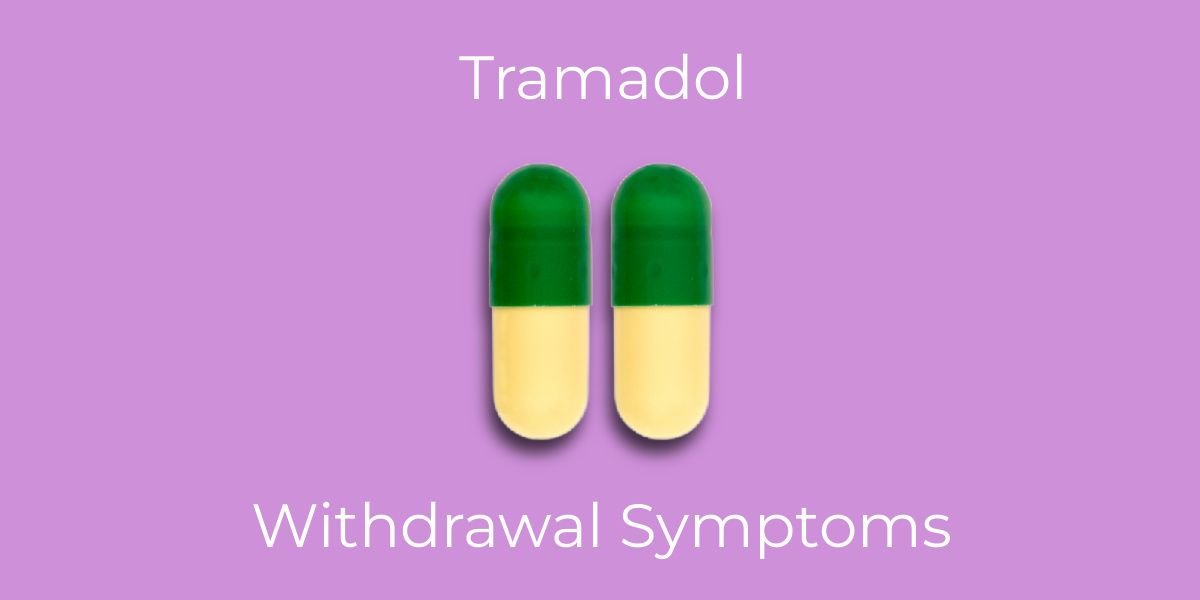Tramadol is a synthetic opioid, which is often prescribed as pain relief. It is also misused and abused due to its effects. Tramadol causes many side effects when used as prescribed or misused, including nausea, dizziness, headaches, and sedation. It can also cause severe side effects, particularly if it is misused.
.jpg?v=1722503889)
What is tramadol?
Tramadol is a synthetic opioid analgesic, also referred to as a narcotic. It is available on prescription as a tablet, capsule, and liquid solution.[1] It is also distributed illegally and used for unintended purposes, which is known as diversion.[2]
What is tramadol used for?
Tramadol is an analgesic medication used for pain relief. It is commonly prescribed to treat individuals aged 12 or above for mild to severe pain.[1][3]
Tramadol differs from other opioids in that it also alters the level of neurotransmitters dopamine, serotonin, and norepinephrine. Because of this, tramadol also impacts mood regulation and the brain’s reward center and pleasure response. This contributes to an antidepressant effect as well as pain relief.[4]
Why do people abuse tramadol?
People without a prescription might buy or be given tramadol to use for unintended purposes. When tramadol is abused or misused, it can cause a feeling of euphoria or ‘high’, along with sedating and relaxing effects. These effects contribute to the abuse of tramadol.[5][6]
Additionally, people might misuse prescription tramadol, taking larger or more regular doses than they are prescribed to create an increased effect. This might be more likely to occur in those who have been prescribed tramadol for a prolonged period and developed a tolerance to their medication.[3]
Similarly, someone might develop a dependence on tramadol or another opioid medication after a prolonged treatment. If opioid dependence develops and the medication prescription is stopped, individuals might turn to illegally buying tramadol to satisfy their cravings and prevent unpleasant withdrawal symptoms.[6]
Common side effects of tramadol
When beginning a new medication, it is common to experience some side effects. Typically, these will reduce within the first two weeks without the need for intervention or treatment. If any side effects continue or become problematic, consult with the prescribing doctor.
Common side effects of tramadol include:[1][3][7]
- Nausea
- Vomiting
- Constipation
- Dry mouth
- Sweating
- Fatigue
- Weakness
- Dizziness
- Euphoria
- Sedation
- Mood changes
Severe side effects of tramadol
In some cases, tramadol can cause severe or persistent side effects. If any of the following side effects occur, it is advised to contact a medical professional for appropriate treatment and advice:[1][3][7]
- Extreme dizziness and fatigue
- Confusion
- Hallucinations
- Psychosis
- Urinary retention or incontinence
- Seizures or convulsions
- Difficulty breathing
- Swelling in the mouth or throat
- Tightness or pain in the chest
- Skin or lips turning blue
- Fainting
- Unconsciousness
- Rash, hives, or blisters
- Muscle pain or stiffness
- Serotonin syndrome
- High body temperature
- Overdose
If tramadol is prescribed for a prolonged period or is misused or abused, it is possible to develop:[2][3][6]
- Tolerance: The effect of the drug reduces as the body develops a tolerance, requiring higher doses to achieve the desired effect.
- Dependence: The individual becomes physically dependent on the drug, causing withdrawal symptoms if the drug is not used, such as mood changes, insomnia, flu-like symptoms, and pain. This contributes to the continued use or abuse of the drug to prevent unpleasant physical and emotional effects and cravings.
- Addiction: Tramadol addiction is different from tolerance and dependence, although it often occurs alongside their development. Addiction can cause compulsive drug-seeking behavior that has harmful effects on the life and functioning of the individual.
Tramadol abuse can cause an increased risk of dependence and addiction and will often increase the risk of severe side effects. People who abuse tramadol may be more likely to experience heart and breathing issues, gastrointestinal effects, coma, overdose, and death.[3][5]
Tramadol overdose
Synthetic opioids are the leading cause of drug overdoses in the US, many of which are fatal.[8] Signs of a tramadol overdose include:[1][3]
- Cold and clammy skin
- Slowed or stopped breathing
- Slow or irregular heartbeat
- Extreme drowsiness
- Inability to wake
- Constricted or ‘pinpoint’ pupils
- Seizures
A tramadol overdose can be treated with Naloxone, which blocks the effects of the drug, preventing dangerous symptoms. Some doctors will provide Naloxone to individuals prescribed tramadol, to be kept in the home in case of an emergency.[1]
Getting treatment
People who are prescribed tramadol for pain relief will often be gradually tapered on and off the medication, as this can help reduce the risk or severity of side effects and withdrawal symptoms. The tapering process will typically be initiated and monitored by a medical professional, who can manage and treat unpleasant or harmful symptoms that occur.[3]
If an individual develops tramadol dependence or addiction, whether with prescribed or illicit tramadol use, they may require inpatient treatment. This can be provided in a hospital or rehabilitation center, where professionals can provide consistent support throughout the detox and withdrawal process.[6]
This might involve psychological support, medication, and holistic therapies. These approaches can help reduce addictive behaviors, treat the underlying emotional distress or dysregulation that has contributed to the addiction, and manage withdrawal symptoms. Medications might be prescribed to help with this, including methadone, buprenorphine, lofexidine, or naltrexone.[9]
Following these treatments, it is often beneficial for individuals to receive ongoing support, including 12-step programs, support groups, and psychotherapy. This can help maintain abstinence and improve addiction recovery.[6]


-guide-detail.jpg?v=1722502026)

